Home office lighting ideas – for ceilings, desks, and walls
These home office lighting ideas for ceilings, desks, and walls create elegance as well as the correct level of illumination for working

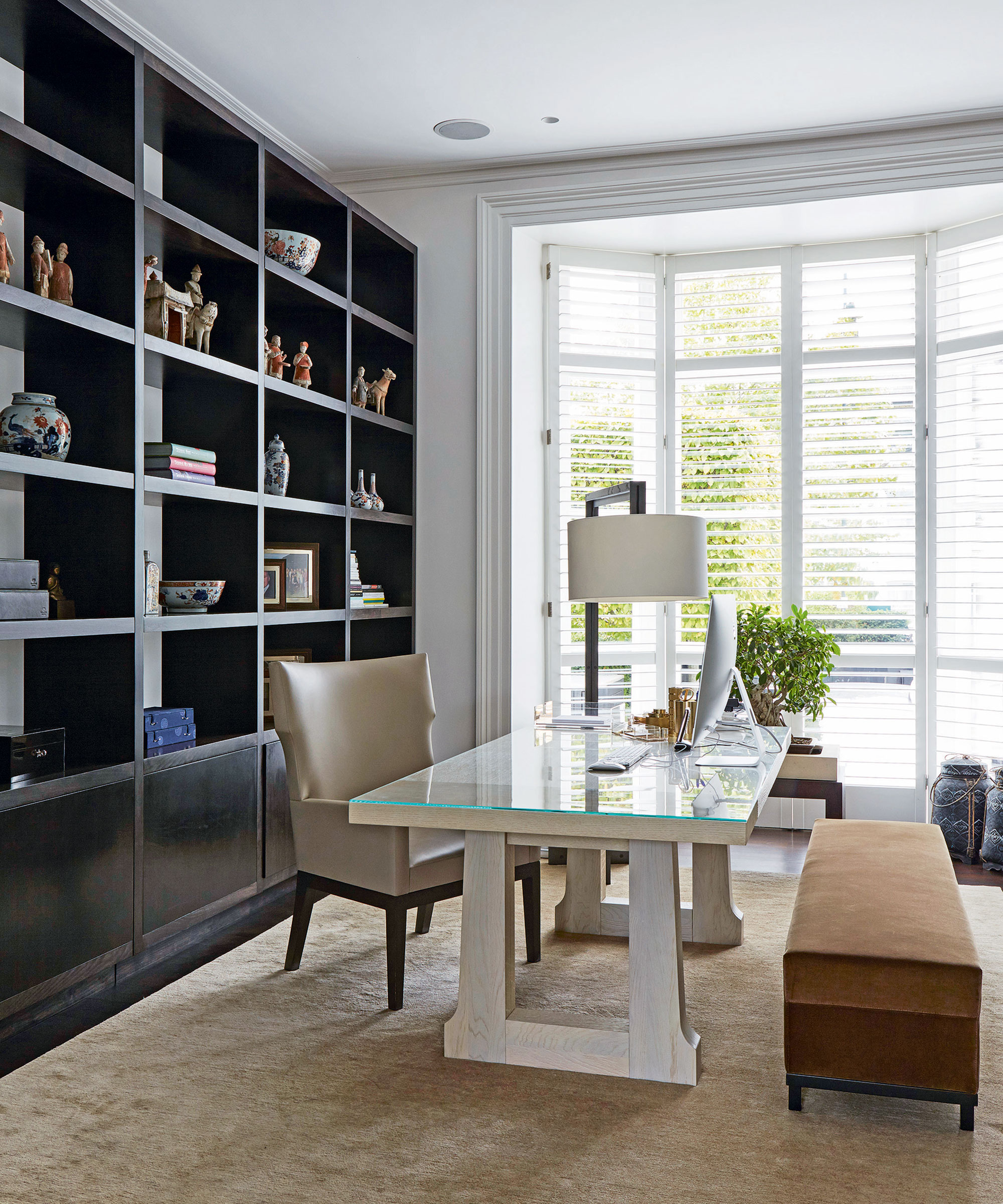
The right home office lighting ideas for ceilings, desks, and walls will ensure working on screen, or close up according to your needs, is comfortable and eye strain is avoided – crucial factors in any home work area.
But since this is part of your home rather than a corporate space, as an element of your overall home office ideas, the style of the lighting is equally crucial. Light fixtures here need to be carefully selected so they play their part in the room’s decor.
We’ve put together a selection of home office lighting ideas for ceilings, desks, and walls to inspire you whether you’re working with an interior designer or planning the room yourself. And there’s advice from the experts to help you perfect your scheme, too.
Home office lighting ideas for ceilings, desks, and walls
As part of your home office setup, it’s as important to plan a complete home office lighting scheme as it is to consider the desk and chair functionality. It's also as complicated as designing lighting schemes for other areas of your home, with ambient (or overall) lighting for the room, task lighting for the room’s specific activities, plus accent lighting that highlights features of the space, all playing their part in a successful design.
1. Layer home office lighting
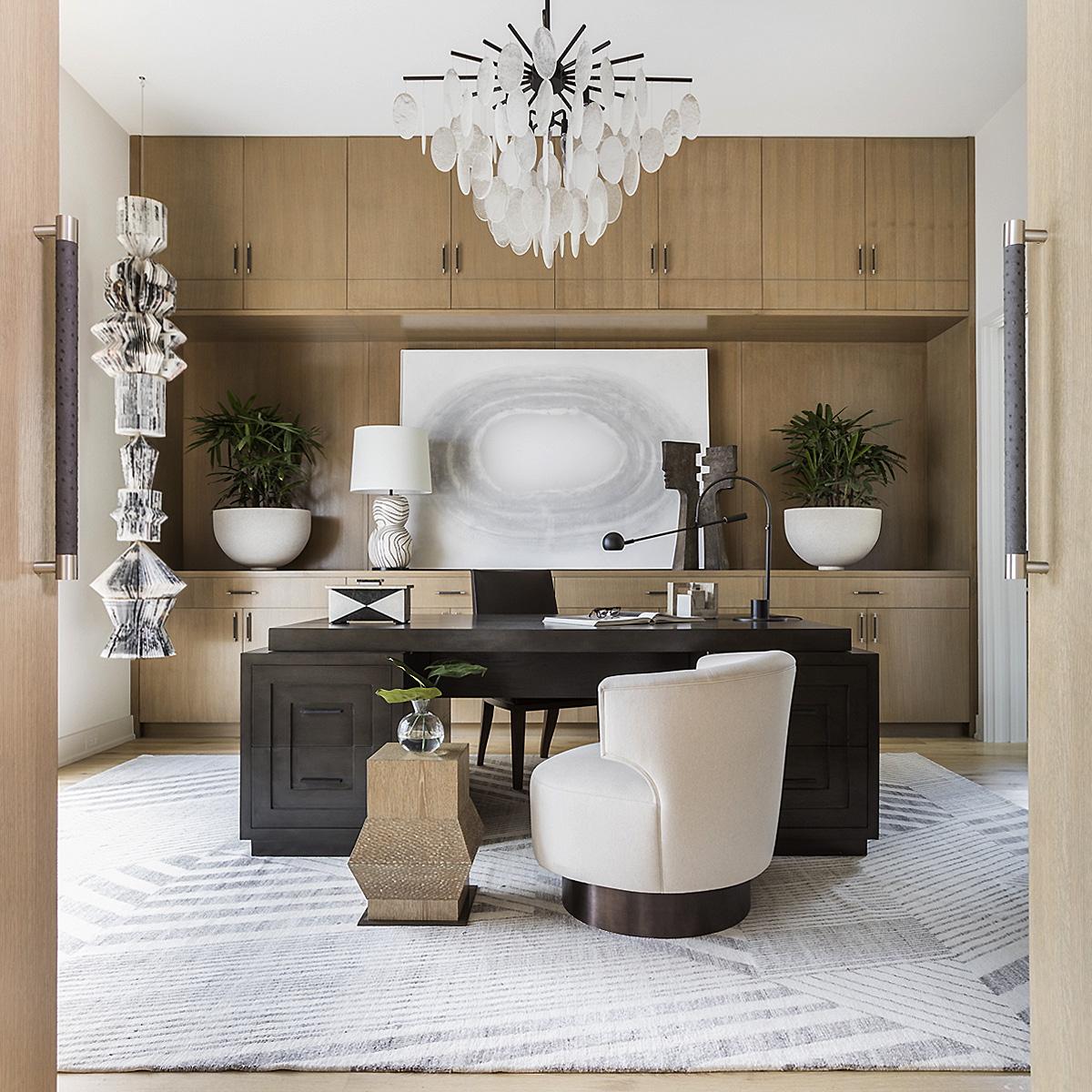
Consider the natural light the room enjoys together with home office lighting ideas for ceilings, desks, and walls as you plan your own scheme, or as you work with your interior designer.
‘Multi-layered lighting is an important factor within a workspace,’ says Benjamin Johnston of Benjamin Johnston Design. ‘Using a combination of natural, ceiling, and task lighting, such as floor and table lamps, allows a homeowner to be productive day or night.’
2. Team wall lights with bespoke joinery
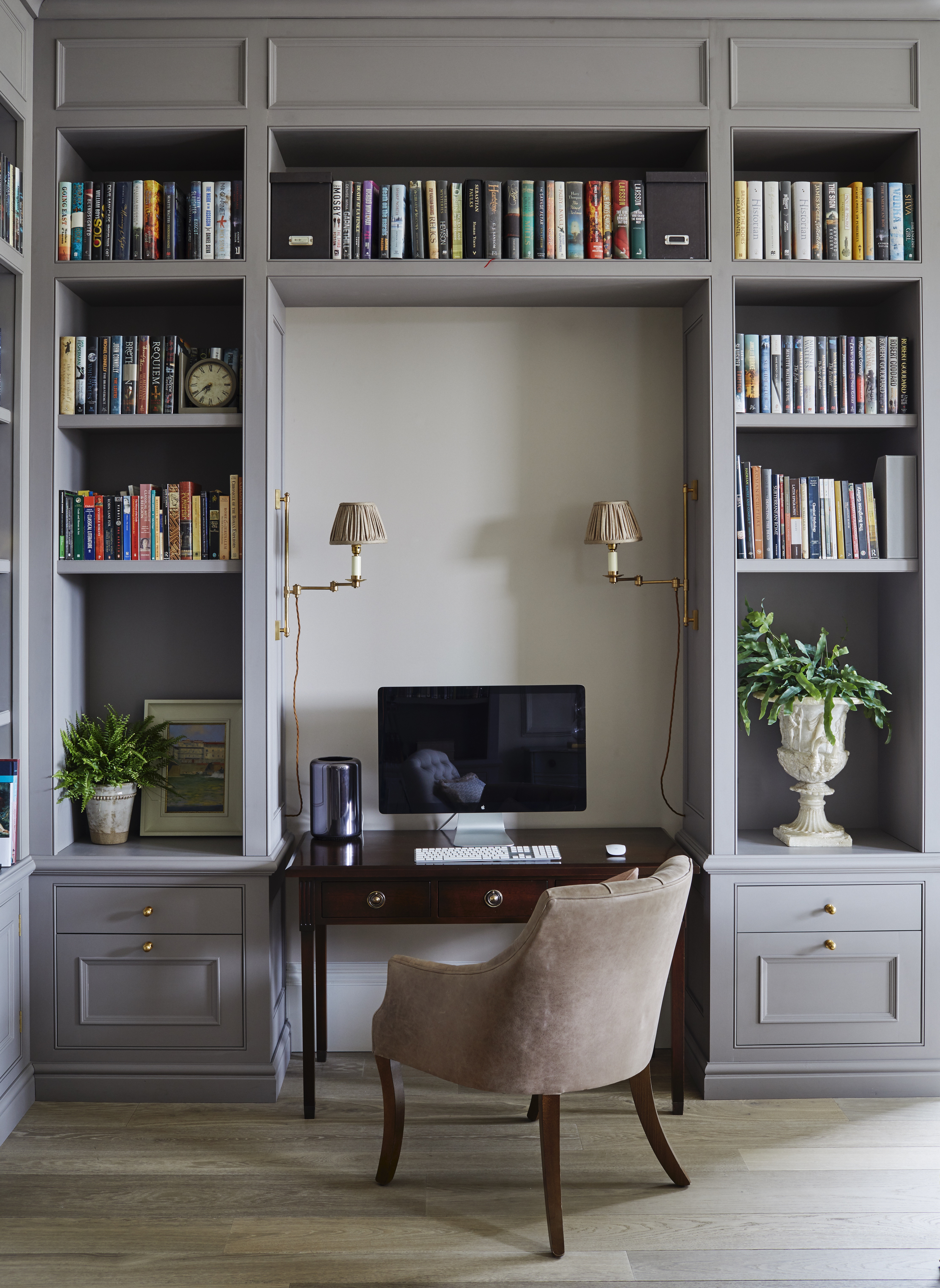
Bespoke joinery in a home office can maximize small home office ideas and, when the floor area is limited, may include a built-in desk, or leave a niche for a freestanding design. In this case, wall lights can be a sound choice as task lighting rather than a floor or desk lamp.
Design expertise in your inbox – from inspiring decorating ideas and beautiful celebrity homes to practical gardening advice and shopping round-ups.
‘If the desk is installed into bespoke joinery, then downlighting directed on to the working area is a great alternative, providing light in the evenings and darker months,’ says Louise Wicksteed, design director at London and Gloucestershire-based interior designers Sims Hilditch.
3. Use home office lighting with a pop of color
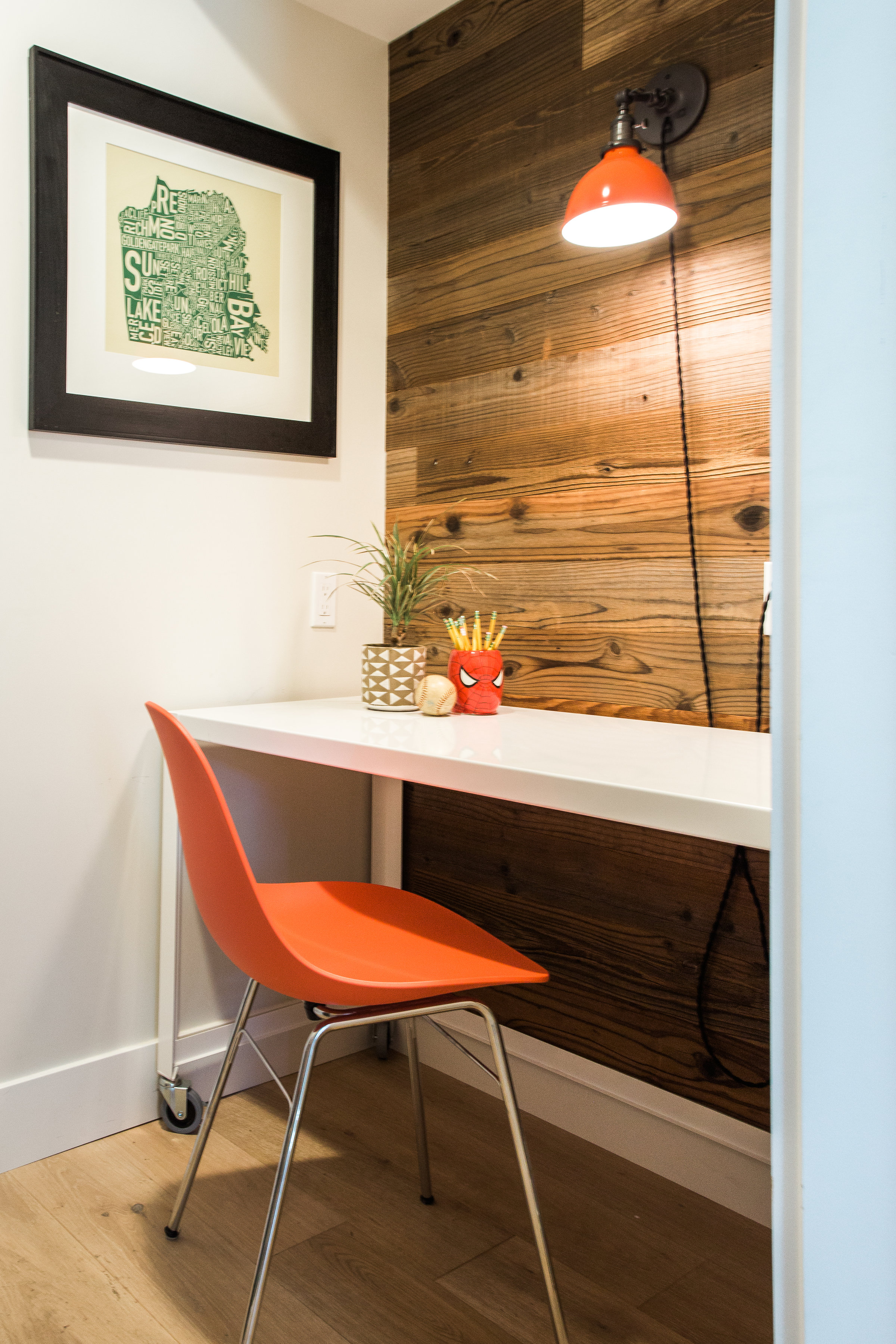
Light fixtures and shades in energetic colors are perfect for a home office environment, adding a vibrant accent, and founder and principal designer Michelle Lisac of Michelle Lisac Interior Design made use of one in this concealed work space.
‘During construction we decided to turn what used to be the entry closet into a hidden study,’ she explains of this room. ‘We installed a secret bookcase door in their family room that opens up into this fun study space for their kids to do homework. We added some character and texture with the Stikwood planks, a colorful plug-in sconce from Schoolhouse Electric, and included some of the client’s great art.’
4. Factor in daylight as well as artificial illumination
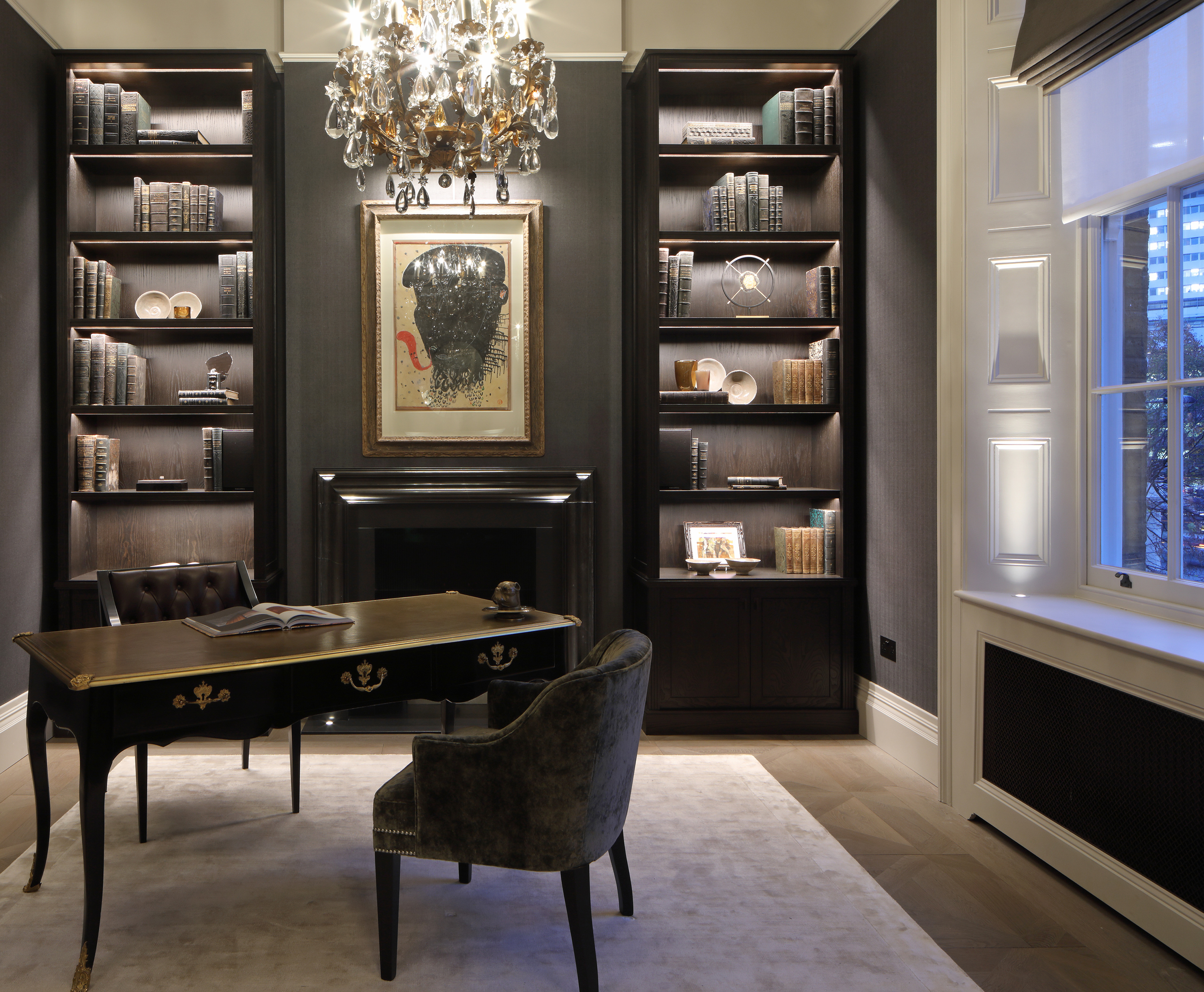
Your home office lighting ideas for ceilings, desks, and walls need to create ‘good general light that is aesthetically pleasing, and task lighting’, explains Sian Parsons, design associate at John Cullen Lighting.
‘If possible, try to set up your work space in an area as close to natural daylight as you can,’ she advises. ‘When available, there is nothing more effective at filling a space with light than the sun. Its even rays will help balance any dark or bright spots caused by your artificial lighting, and helps boost your mood from a human-centric point of view.’
5. Work the angles
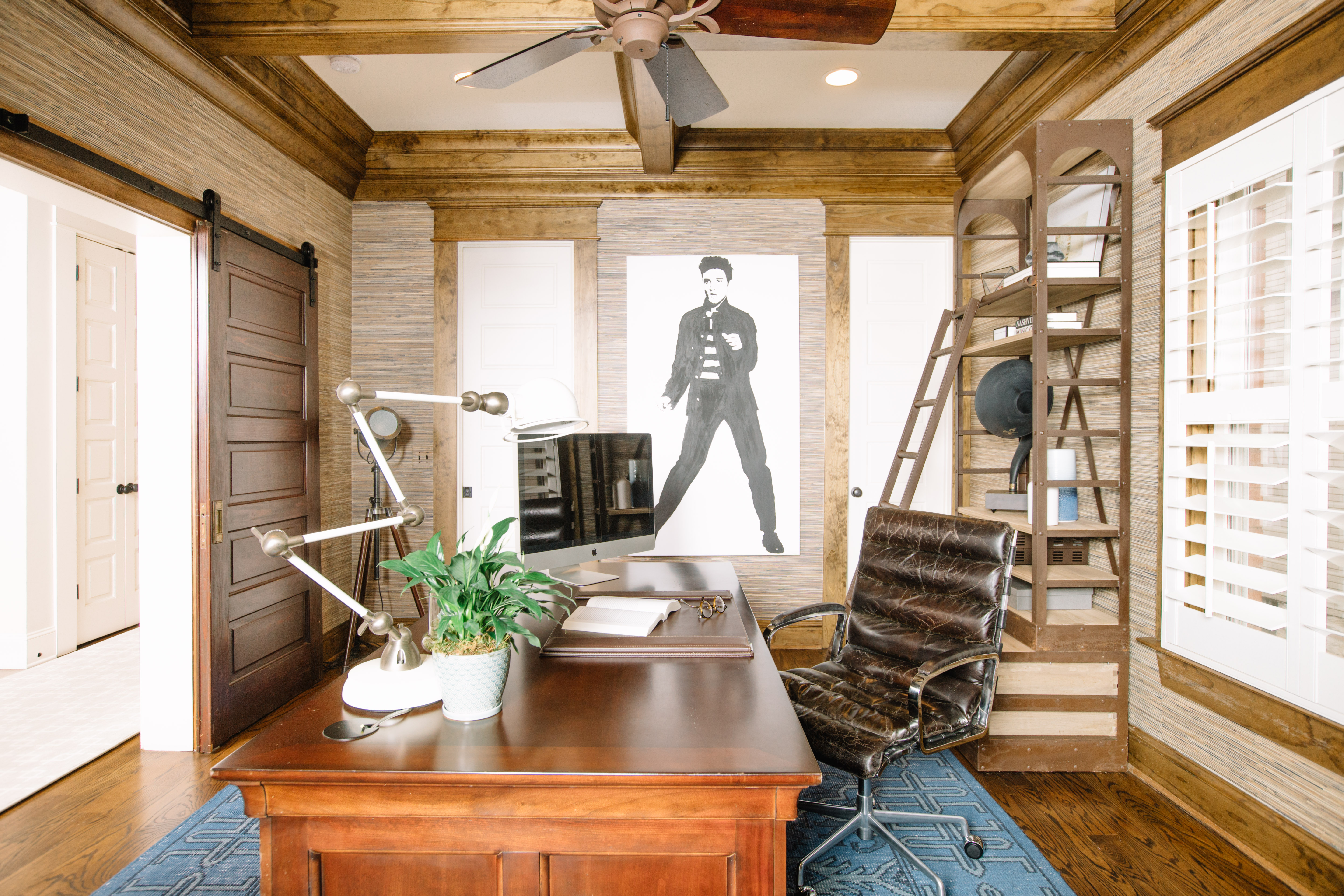
If you undertake a variety of different tasks at your desk rather than working constantly on screen, look for a desk light with an arm that can be adjusted, so you can move the light source according to what you’re doing.
The desk lamp in this home office offers flexible positioning as well as complementing the room’s design. Of the scheme, Jessica Davis, owner and principal designer of ASID Allied JL Design, says: ‘This progressive traditionalist office features an Elvis painting by a local Nashville artist named Inez.
‘The desk is a vintage reproduction of an Eames style, and shelving is from Restoration Hardware – combining a rustic bronze metal frame with exposed rivets and natural oak shelves and drawers. This piece really introduced an area for display and storage, and helped create a consistent line of sight flanking the windows. The photo light in the corner is actually a vintage reproduction of a spotlight that was historically used on movie sets.’
6. Swerve eye strain

Home office paint colors can affect light levels in a room, so it’s crucial to ensure home office lighting ideas for ceilings, desks, and walls are appropriate to the hue of the room, and in darker spaces, do not create fatigue and discomfort.
‘Good general light to the room should be low glare to ensure that your eyes aren’t straining with glare spots from light fittings, as well as the glare emitted from your screen,’ says Sian Parsons.
‘Well placed and discreet downlights, set tilted towards the walls so that the light reflects off and back into the room, will help create an excellent but softened light. A coffered ceiling could be equally as effective for a low glare general light source.’
7. Harmonize ceiling lighting with the room’s decor
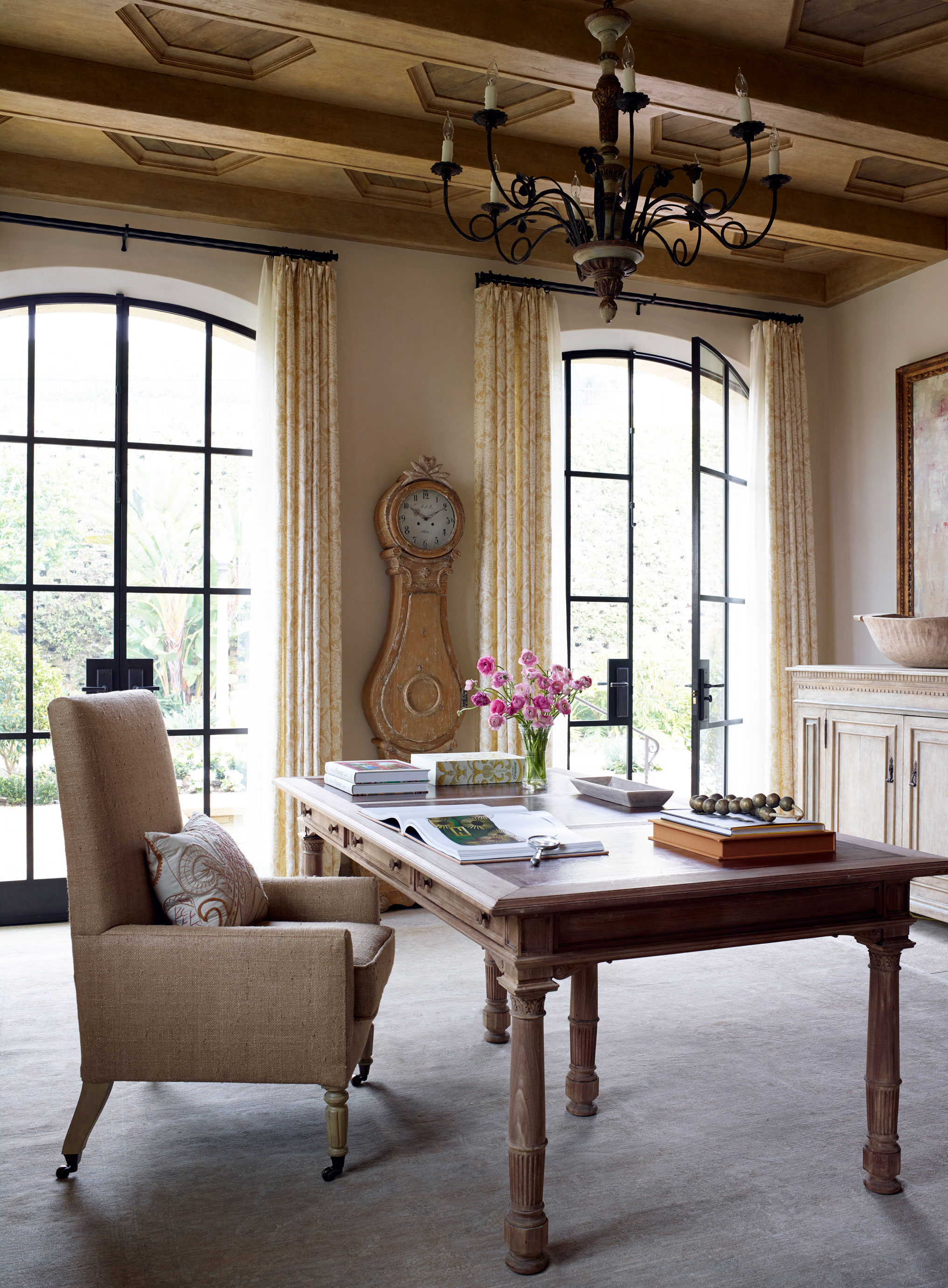
A ceiling light for an office can be a standout piece or more understated in its style. For this home office, California-based interior designer Ohara Davies-Gaetano took the latter approach.
In decorating the room she was inspired by the garden immediately outside the room, explaining, ‘I was mindful of the tonality and textures and selected hues that highlighted the gravel, the old stone and the shades of planting.’
The room’s ceiling light harmonizes with this palette while pleasing the eye with its elegant curves.
8. Consider working hours when planning desk lighting

A home office desk should always be equipped with task lighting, but as well as taking into account the activities it needs to cater for, consider your hours of work.
‘Thinking about the specific tasks and the times of day that they take place is key to ensuring you have the best possible lighting solution – bespoke to your home-working situation,’ says Sian Parsons.
‘Whether you have space for a lamp, or a wall light, decorative fittings should give an even glow of light with no harsh spots. Consider something shaded or opaque.’
9. Swap to a floor lamp
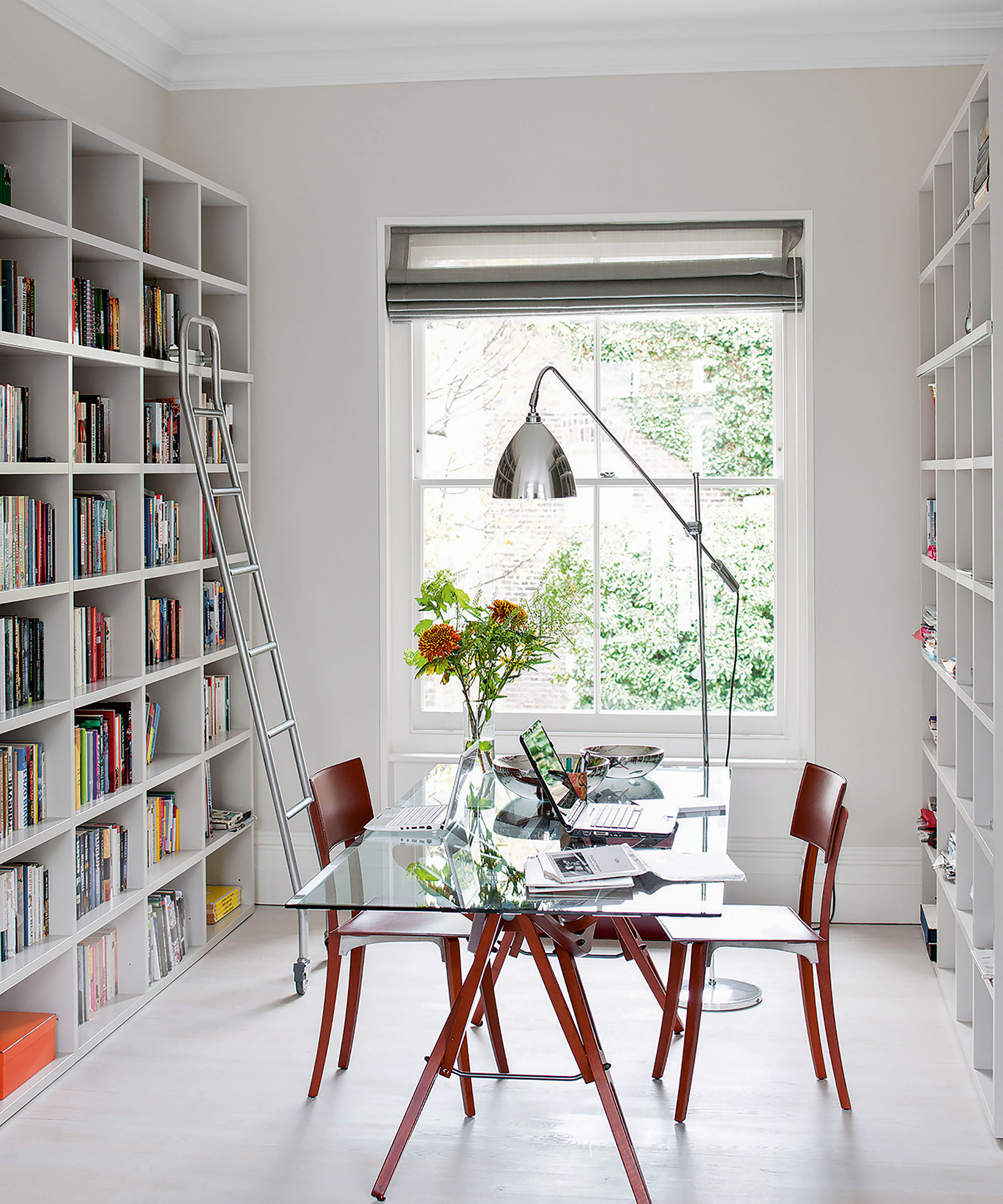
For a desk, a floor lamp can sometimes be a practical and chic alternative to a table lamp. In this room, the statement floor lamp illuminates a desk shared by two people, creating light across the surface they both occupy.
The design of this room also makes the most of daylight with a glass-topped desk that avoids blocking it, and pale flooring and white shelving that reflect it rather than absorbing it as dark colors would.
10. Match ceiling and desk lights for a sophisticated effect
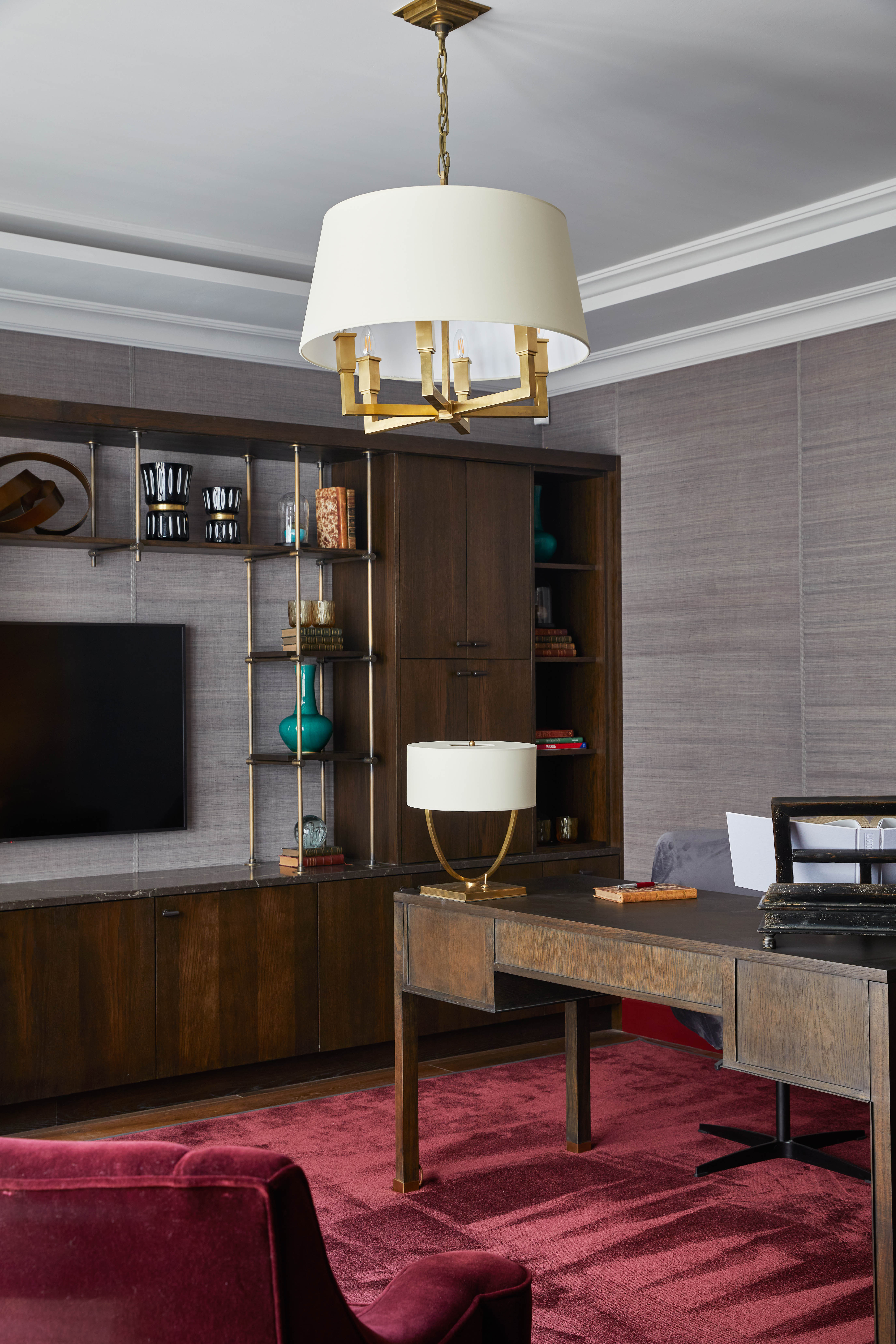
It’s possible to combine a selection of home office light designs successfully, but you may want to follow the lead of this home office by Dublin and London-based Sara Cosgrove Studio with lights for ceiling and desk that repeat colors and materials. The effect is sophisticated yet subtle.
In this home office, the metal of both ceiling and desk lamp echoes its use within the bespoke cabinetry, adding gentle highlights against the rich shade of the flooring and chair upholstery, the wood of the desk, and the darker tones of the walls.
What type of lighting is best for offices?
Both natural lighting and artificial lighting are crucial to making a home office a comfortable space in which to work, and balancing the two is imperative. Make the most of the natural light available because there is a strong relationship between workplace daylight exposure and sleep, activity and quality of life, a 2013 study by the American Academy of Sleep Medicine found.
‘Matching the Kelvin (warmth of white) of your light source to the Kelvin of the light from the sun will also help immensely when working from home,’ recommends Sian Parsons. ‘Cooler Kelvins (anything about 3000K) will appear harsh and over bright as the sun goes down, while warmer Kelvins (around 2400K) are similar to dusk and dawn, so may help you wind down towards the end of the day.’
How bright should home office lighting be?
The brightness of light is measured in lumens. If you’re used to thinking in Watts, a 60 Watt bulb is the equivalent of 800 lumens, and 75 Watts 1,100 lumens. For a desk lamp, look for a minimum of 800 lumens but better might be 1,100 lumens to provide focused light for this area of your room.
Make sure you don’t create glare on screens with your light. A desk lamp you can angle to avoid the problem could be the answer.

Sarah is a freelance journalist and editor. Previously executive editor of Ideal Home, she’s specialized in interiors, property and gardens for over 20 years, and covers interior design, house design, gardens, and cleaning and organizing a home for Homes & Gardens. She’s written for websites, including Houzz, Channel 4’s flagship website, 4Homes, and Future’s T3; national newspapers, including The Guardian; and magazines including Future’s Country Homes & Interiors, Homebuilding & Renovating, Period Living, and Style at Home, as well as House Beautiful, Good Homes, Grand Designs, Homes & Antiques, LandLove and The English Home among others. It’s no big surprise that she likes to put what she writes about into practice, and is a serial house renovator.